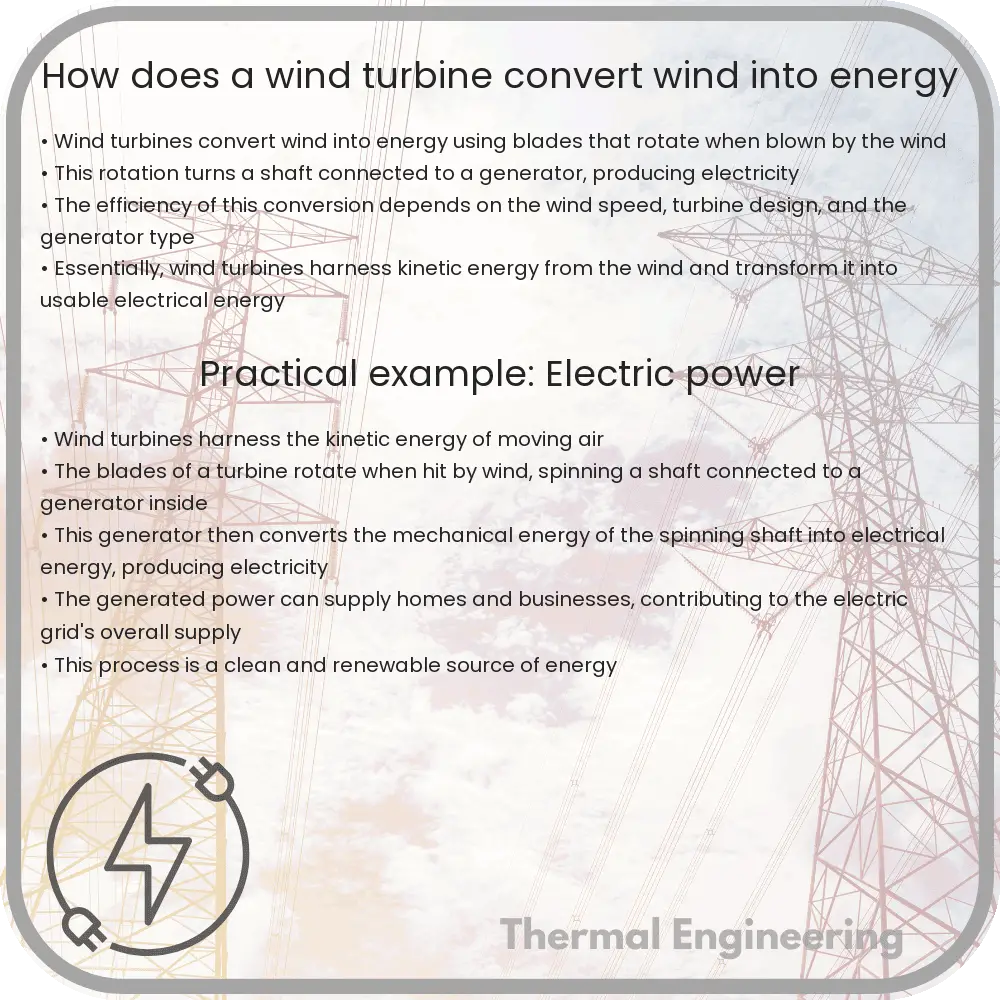Learn how wind turbines transform wind into electricity through steps like capturing wind by blades, rotation and torque production, and the role of generators, detailed in accessible language.

Understanding How Wind Turbines Convert Wind into Energy
Wind turbines are a cornerstone of sustainable energy strategies worldwide, harnessing the natural power of the wind to generate electricity. But how does a seemingly simple breeze transform into energy that powers our homes, businesses, and industries? This article will explain the process in easy-to-understand terms.
The Basics of Wind Energy Conversion
At its core, the operation of a wind turbine involves converting the kinetic energy of wind into mechanical power, which can then be converted into electricity. This process can be broken down into several steps:
- Capture of Wind by Blades: As wind strikes the blades of a turbine, they are designed to capture and channel that energy, causing rotation. The blades are shaped and angled like airfoils or wings, which helps them exert a lift force perpendicular to the direction of wind.
- Rotation and Torque Production: The rotation of the blades around the rotor generates torque. This mechanical force is the twisting force that we need to generate electricity.
- Transmission of Rotational Energy: The rotor’s central shaft is connected to a gearbox within the nacelle (the covering housing at the top of the turbine). This gearbox is designed to increase the rotation speed sufficient for the generator.
- Generation of Electricity: This fast rotation is transferred to a generator, where electromagnetic induction occurs. As the shaft rotates, it spins magnets within the generator. The movement of these magnets past coils of wire induces an electrical current, thereby generating electricity.
The Role of the Generator
The generator is the heart of the wind turbine, performing the crucial task of turning mechanical energy into electrical energy. It typically operates on the principle of electromagnetic induction, determined by Faraday’s Law of electromagnetic induction which states that the voltage induced in any circuit is proportional to the rate of change of magnetic flux through the circuit.
In practical terms, this process within the generator translates the mechanical turning motion of the turbine into electrical energy by forcing electrons to move through an external circuit. This flow of electrons is what we use as electricity.
Power Output of Wind Turbines
The amount of electricity a wind turbine can generate depends on several factors:
- Wind Speed: Higher wind speeds generate more power. The relationship between wind speed and power output is cubic, meaning that even small increases in wind speed result in a significant rise in power output.
- Turbine Size: Larger turbines with longer blades can catch more wind energy and thus generate more power.
- Air Density: Denser air contains more air molecules and can transfer more energy than less dense air.
The equation for the power extracted by a wind turbine (P) is expressed as follows:
P = 0.5 * ρ * A * v3
Where:
- P is the power in watts (W),
- ρ (rho) is the air density in kilograms per cubic meter (kg/m3),
- A is the rotor area in square meters (m2), and
- v is the wind speed in meters per second (m/s).
Conclusion
Wind turbines convert the kinetic energy of wind into usable electrical energy through a sophisticated synergy of aerodynamics, mechanical engineering, and principles of electromagnetic induction. As the world moves toward more sustainable energy systems, understanding and improving the efficiency of technologies like wind turbines is paramount. These marvels of modern engineering not only symbolize human ingenuity but also provide crucial clean energy that helps combat climate change.
By understanding the workflow of wind turbine technology, the potential impact these mechanisms can have on our future energy sustainability becomes vastly transparent, encouraging investment and interest in renewable technologies.